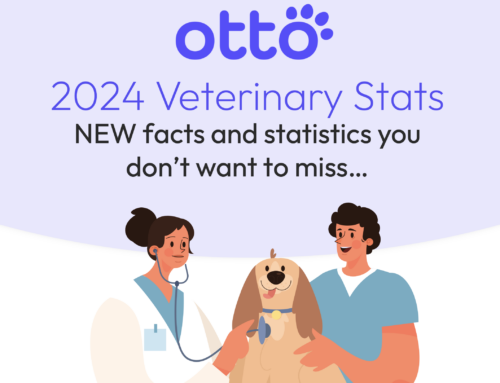
Otto CVO, AVMA VP Jennifer Quammen Shares Her Vision for the Vet Industry
 “I want us to acknowledge what’s working well, but not be afraid to find areas where we can push the envelope.”
“I want us to acknowledge what’s working well, but not be afraid to find areas where we can push the envelope.”
Jennifer Quammen, DVM, MPH, has a passion for the vet industry that’s apparent in her dipping her paws into multiple organizations.
She currently serves as Chief Veterinary Officer for Otto, co-founded a veterinary coaching business, practices as a relief veterinarian, and was recently named Vice President of the American Veterinary Medical Association (AVMA).
In each of these roles, Dr. Quammen seeks opportunities to advocate for veterinarians and encourage industry-wide progress.
“A few themes drive every facet of what I do: How do we move this profession forward? How do we encourage wellness? How do we deliver better veterinary care? How do we help more patients?” Dr. Quammen said. “That’s true in my position at Otto, my volunteer work with AVMA, and everything else I do.”
Asking those questions throughout her career has helped her hone her vision for the industry as a whole — a vision that focuses on five key points:
- Encouraging well-being.
- Making better use of technology.
- Viewing animal health holistically.
- Expanding the role of veterinary technicians.
- Being more environmentally friendly.
Here’s what she has to say about each point:
Encouraging well-being
One of the issues Dr. Quammen is most passionate about is encouraging wellness in the veterinary community.
“We hear a lot about burnout, compassion fatigue, and things of that nature in the veterinary space,” she said. “Those are topics that have been very close to me since probably before graduation.”
She believes the best approach to addressing these issues is to optimize the mental performance, physical needs, and social networks of veterinary professionals.
Making better use of technology
With her involvement in Otto, AVMA, coaching, and practice, Dr. Quammen understands better than most the value of technology.
That’s why she would like to see it play a more significant role in vet clinics, as well as with aspiring vets still in school.
“I’d love to see a conversation around technology being utilized better in the space of veterinary education and in practices, as well,” she said. “We need to discuss things like paper charting versus electronic charting and how we can manage a patient database that travels with that patient from clinic to clinic.”
Viewing animal health holistically
Unsurprisingly, Dr. Quammen also has a passion for improving animal health — and she understands that getting the best patient outcomes involves a multifaceted approach.
“We could think about veterinary medicine, but that’s just one sector,” she said. “We should also think about the larger concept around animal health, which expands into the land of pharmaceuticals and research, as well as wearable technologies and remote monitoring.”
Expanding the role of veterinary technicians
Veterinary technicians in clinics are responsible for charting, managing client databases, checking clients in and out, and more. In veterinary schools, they help teach future veterinarians.
Many industry experts, including Dr. Quammen, wonder if this is the best use of their time.
“We need to do a better job of making the most of our technicians’ skill sets,” Dr. Quammen said. “That’s a conversation happening among practitioners, and my gut feeling is that conversation is also happening in academic institutions.”
Being more environmentally friendly
Being environmentally cautious is also top of mind for Dr. Quammen.
“I want to continue to see us doing things that are more environmentally sound,” she said. “We have to ask questions, like ‘How do we start to recycle the bajillion pieces of plastic that we use in our veterinary practice every day?’ and ‘How do we acknowledge the charting we’ve done but not keep the 84,000 paper charts for 12 years?’”
Moving the industry forward
While Dr. Quammen has an ambitious vision for the future of the veterinary industry, she understands that changing for change’s sake isn’t the best approach.
“I want us to acknowledge what’s working well, but not be afraid to find areas where we can push the envelope and lean into that,” she said. “We just have to make sure the changes we make aren’t having an adverse effect on patient care, vets, technicians, staff, or students.”



